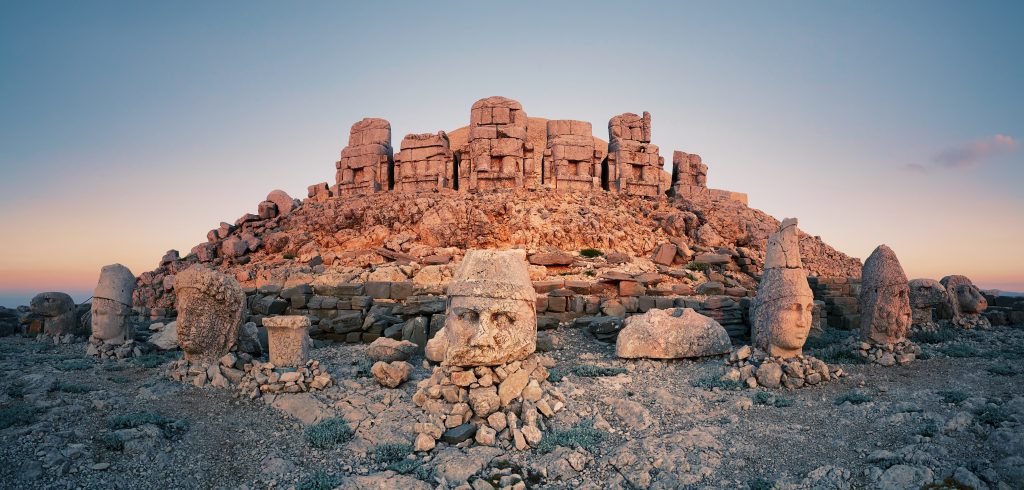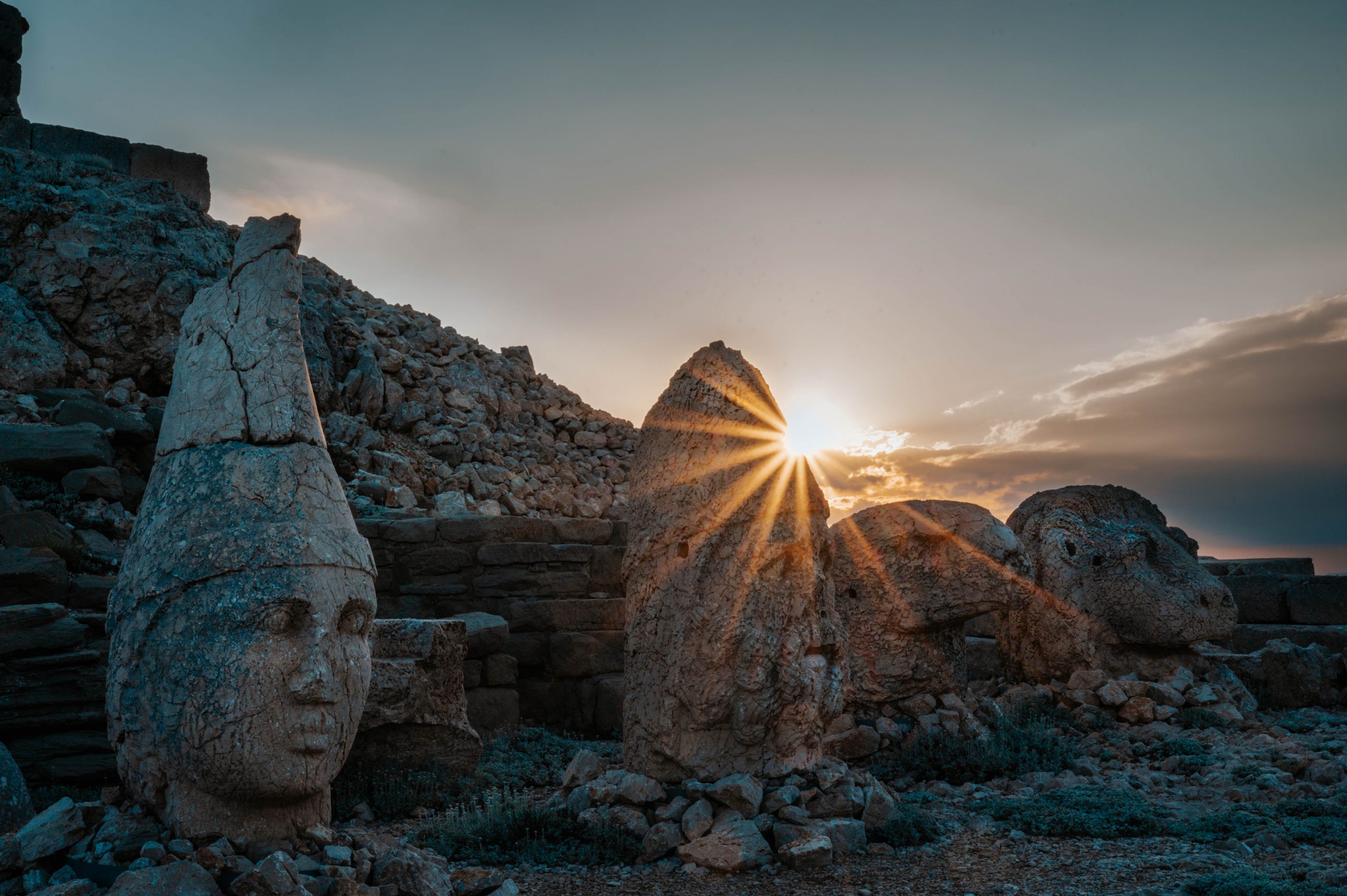It was time to leave Cappadocia behind and with that the for me, Milene, known part of Turkey. The kind owners of the hotel we stayed in told us about the best way to travel to Nemrut. And boy was he right.
Our first stop would be a caravanserai. This is a place where travellers could stay, exchange their horses, have food. Sometimes the local tribe only let a traveller pass if he promised to visit all the caravanserais on the way. That way he would spend money in the area which was a good deal. Unfortunately the caravanserai, Han in Turkish, was closed and we could only see it from the outside.
The Turkish highlands
Afterwards we were surprised by a valley resembling the highlands of Scotland. Truly! Even the weather made us think of Scotland. From sunny and hot weather we drove into a thunderstorm roaming the hills and mountains of the Tekir Valley. And with the thunderstorm above our heads we decided it’s time for a break. We parked the car in the middle of purple flowers overlooking the beautiful green hillside.
We slept like babies here, that is if the baby sleeps quietly. Even though the place was amazing it was time to move on. Our destination for today would be Nemrut dagi. It’s quite the touristy destination, mostly for Turkish people though.
Nemrut Dağ is the Hierotheseion (temple-tomb and house of the gods) built by the late Hellenistic King Antiochos I of Commagene (69-34 B.C.) as a monument to himself. The mausoleum of Antiochus I (69–34 B.C.), who reigned over Commagene, a kingdom founded north of Syria and the Euphrates after the breakup of Alexander’s empire, is one of the most ambitious constructions of the Hellenistic period.
Mount Nemrut is a mountain in south east Turkey and famous for its sculptures on top. Faces of Apollo, Zeus and the King himself. An eagle and lion to protect the statues. 11 years ago, when I stayed in Kilis, I wanted to visit Nemrut. However something, a war, came in between. We arrived at Mount Nemrut right before sunset. The road to the top of the mountain is very steep and we had to take it slow with Alexine not to destroy her by overheating. But we got to the top and checked out the sunset at the mountain. Magnificent!! The downside was that it was incredibly crowded and people did not respect the statues at all. There are ropes in front of the statues so people would not climb over it. But of course some still do. Surprisingly it were mostly adults who should understand what it means when ropes are withholding you from touching the statues. It annoys us as a lot of you can read here but it luckily doesn’t kill our mood totally. Nemrut is amazing, even though there are a lot of people.

We slept near the statues in the van and woke up at 3:30 the next day to check out sunrise. While many people looked at the sun rising over the hills in the far distance we looked at the statues and their ever changing colours and faces. The stones are not from around the place and had to be taken all the way up here. That is incredible! Just to worship some Gods and show your power. But thousand years later we are enjoying this art, thus we’re thankful.
At some point everyone was gone and it was just us and the statue. What a magnificent ending to this visit.
Today we had another very interesting sight on our itinerary. It’s the oldest manmade settlement or temple found on earth.
Göbeklitepe
The oldest part of the area is built 9.000 BCE, that’s 11.000 years old!! The pillars of the buildings are still standing, the stone cut animals very much visible and it’s very clear that this was a special place for humanity at that time. It could very well be the first religious place on earth! So, we went over there, paid a ticket (for all these places you have to buy a ticket) and went over to check the sight. It’s not to big so very doable and all the information is written in English as well as Turkish. We missed a bit of explanation to what we are actually looking. Especially about the animals cut on the pillars. To be honest it’s just unimaginable that this is so old. It looks very well preserved. And our minds always go wondering when we think of live 11.000 years ago.
Our stop for the night would be Sanliurfa, city of Prophets.
Love, Milene & Yuri







